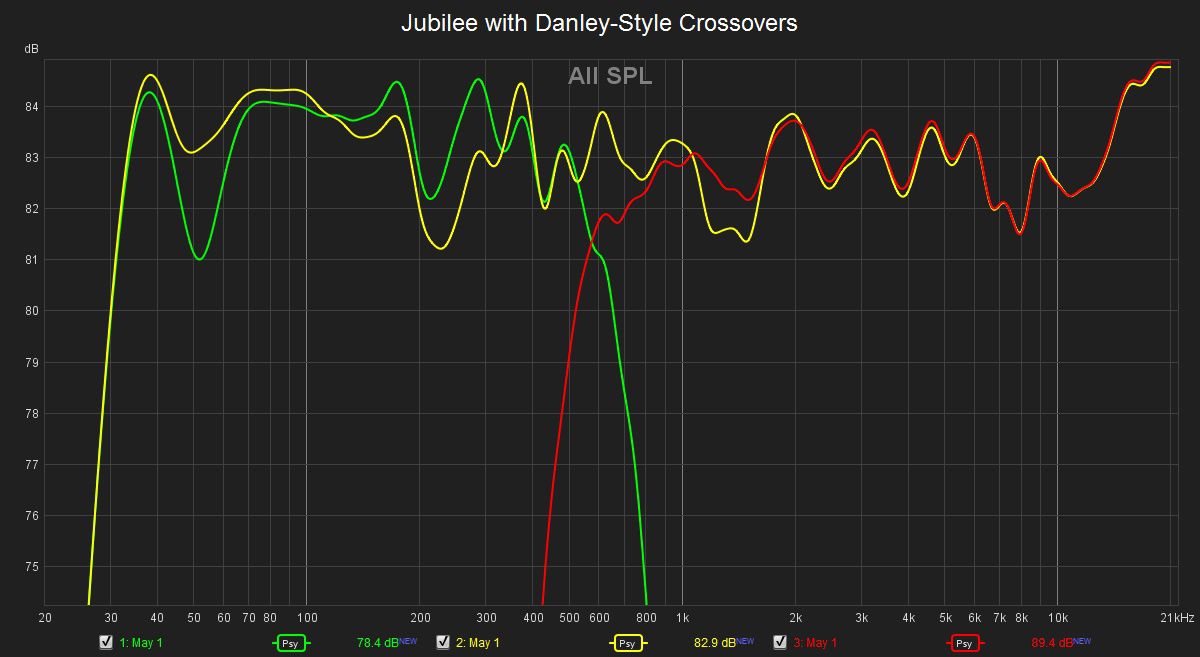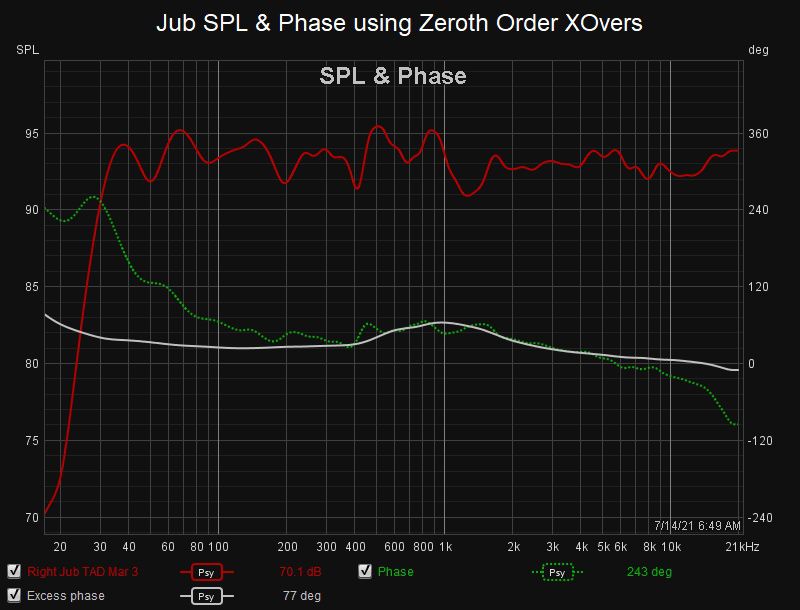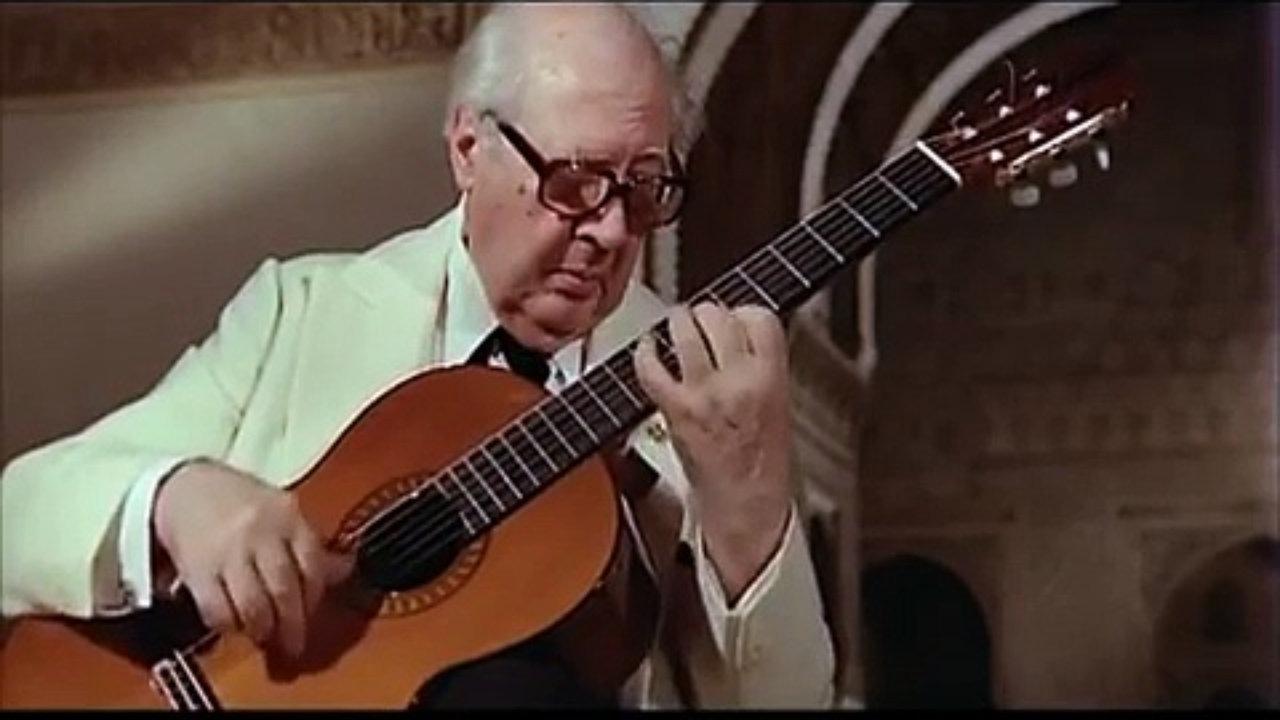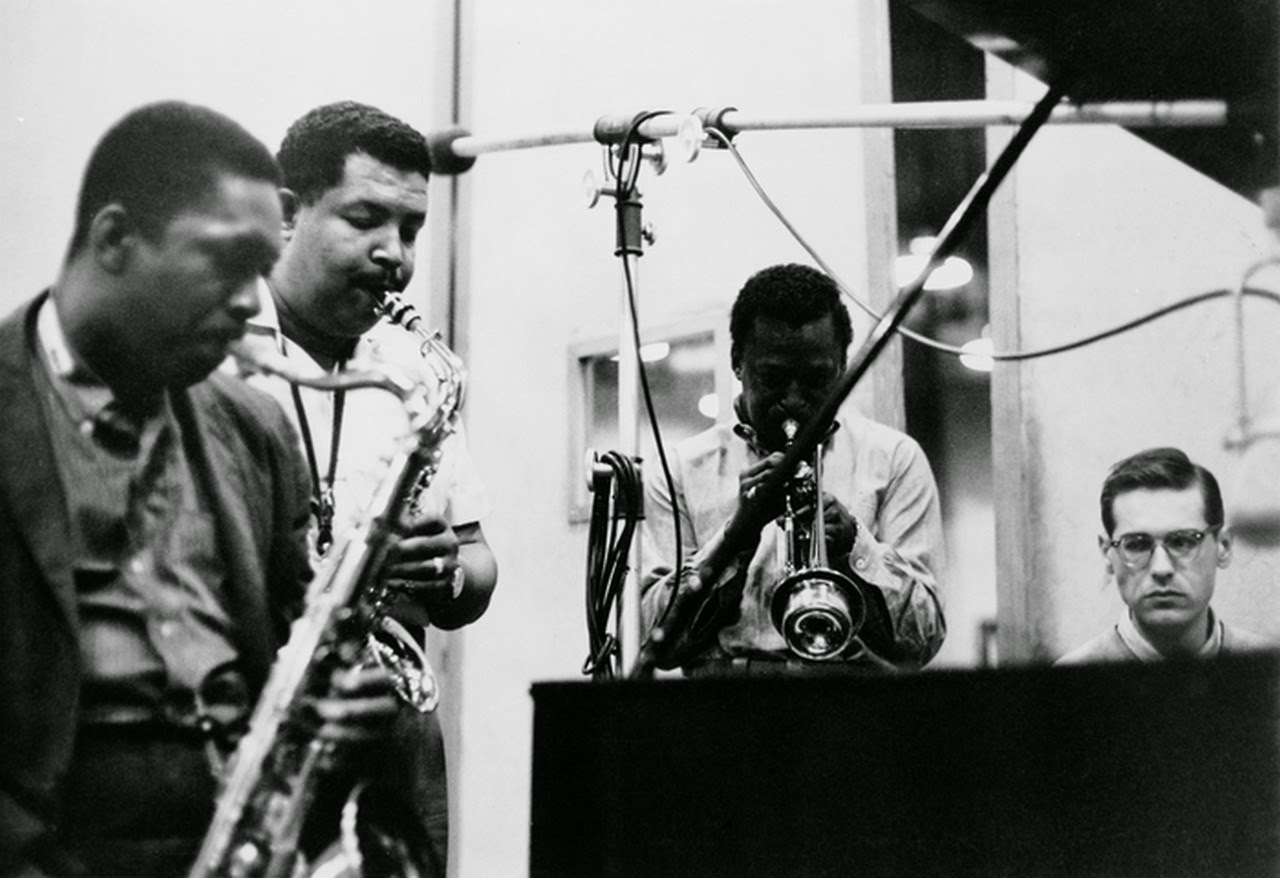-
Posts
9702 -
Joined
-
Days Won
15
Content Type
Forums
Events
Gallery
Posts posted by Chris A
-
-
38 minutes ago, MMurg said:
...So, I was thinking of trying to do some demastering "on the fly" as I listen. My first thought was maybe using the analog output from my Oppo disc player/DAC, taking that through a good quality graphic equalizer, and using an alternate analog input on my processor. I'd use that path when I'd want to listen to obviously badly mastered recordings and do a rough demaster at listening time. Anyone have an good recommendations on a good equalizer (or some other equalization device that I'm missing)...Any suggestions would be appreciated.
You could look at the miniDSP 2x4 HD as an EQ-only device. It has a mini-USB connection to a computer and an available IR remote that can used as a gain control (like a preamp). The connections are RCA (unbalanced), or S/PDIF (TOSLINK). This would give you a lot of control over the output in both graphic EQ and parametric EQ formats, it injects essentially no distortion or noise (except for the unbalanced RCA connections to/from the unit), and the price is right. It's very small, and can be hidden away behind an equipment rack:

Additionally, you can use the unit as a DSP crossover for any other loudspeakers needing to be bi-amped.
Chris
-
20 hours ago, Rivilee said:
So, has anyone built the design you posted [i.e., the Cornwall drop-in design]?
Not that I'm aware of. I plan to do a couple fairly soon (i.e., this year sometime, probably before mid-October--when I need them).
20 hours ago, Rivilee said:I'm looking for something down to about 90hz (crossing to a TH or FLH).
Clearly, this horn will do that lower roll-off frequency, if not lower, especially if using a DSP crossover.
20 hours ago, Rivilee said:I like the simple idea of sealed vs BR using bigger drivers. I would like the output for P.A. use but not rule out home (shop) use.
Another advantage of sealed (acoustic suspension) woofers is that it will not necessarily require a high pass filter to protect the woofers from unloading, unlike bass reflex (i.e., ported) enclosures. Also, the phase and group delay curves are flatter near the bass roll-off frequency.
20 hours ago, Rivilee said:Can your spreadsheet design work? Crossing so high (650-750hz) would 15" drivers still work?...How far down the horn to cut holes for 650hz?
Certainly. You just need to calculate the 1/4 wavelength axially from the acoustic center of the compression driver to the beginning lip of the off-axis ports. For 700 Hz, you'll need to put the woofer ports no farther than about 3.5-to-4 inches from the throat of the horn, as measured axially along the central axis of the horn (i.e., not along the horn wall). I'd shoot for 3.25 inches from the horn entrance to the leading edge of the woofer port, measured along the central axis of the horn. That's roughly 4.5 inches as measured along the horn wall to the beginning the port opening. I'd think about placing the woofers on top and bottom of the horn in order to preserve the horizontal coverage polars of the horn (the vertical polar coverage consistency is much less critical than horizontal).
20 hours ago, Rivilee said:Or since I don't need below 90hz or so could I use 4 8" drivers?
You could certainly do that. The horn doesn't really care what's happening on the reverse side of the horn. I'd make sure that the four woofers have sufficient Xmax (large signal parameter) and Qts/Fs to give you sufficient low frequency response, as modeled in Hornresp. Be careful with the woofer diaphragm travel vs. the mounting surface on the rear side of the horn to ensure that there is no significant interference during woofer diaphragm surround extension. This is lesson learned from others doing MEHs. Check the travel by hand to make sure that you can still get the full Xmax out of them without the surround impacting the mounting surface--before assembly.
20 hours ago, Rivilee said:Also, the throat on the spread sheet appears to be 1" but the CD is 1.4"
Slice the throat off (on paper) until you get 1.25" a side on the horn entrance/throat (square).
Feel free to PM me on any other particulars of your design. Welcome!
Chris
-
 1
1
-
-
3 hours ago, Supersteff said:
I know that you Chris use D75 amps for your woofers. Do you think it would be "safe" to use an ICE-Power amp for woofer-duties
No problem at all.
3 hours ago, Supersteff said:This is a somewhat disturbing thread, due to the fact that I do own 6 MiniDSP PWR-ICE-125 plate-amps! I bought them some years ago, before I found Klipsch Community and the K 402 MEH, to build a traditionally 3 way loudspeaker.
If there is anything that I've found with miniDSP, you have to talk about specific miniDSP products--it's not a monolithic "good" vs. "bad".
In the case of the miniDSP 2x4--this DSP crossover has noted gain and noise issues, while the 2x4 HD is a very good product, especially considering its price. So before you change anything, listen to them with your new loudspeakers (whenever that occurs). Then try out different amplifiers to hear any differences. At that point, you'll know.
Chris
-
 1
1
-
-
1 hour ago, VDS said:
Can you listen to 5.1 mode with 2 channel set up, or only a surround system?
Virtually all multichannel discs have stereo layers on them, requiring only the ability of your player to read the disc (i.e., DVD, DTS, multichannel SACD, or Blu-Ray, etc.).
Chris
-
1 hour ago, tromprof said:
Recording with multiple mics in the orchestra is dumb because we don't play in a manner that is suitable for that.
John Eargle (former PWK employee and long-time JBL/Harman engineer) is really the only recording engineer that I can think of that actually did use lots of microphones--and assembling the final mixdown stereo tracks:
Another diagram from The Microphone Book by Eargle showing the placement of microphones that he used for orchestral recordings with soloists identified:

I note with some dismay that the record company that he worked for (Delos) apparently hired some real yo-yo's for mastering guys (that, or the senior management were of very questionable decision making expertise). Once I demaster one of his albums, I can't believe how good the finished tracks really are. I'm talking about perhaps a dozen albums of his that I've demastered and found some real gold.
Chris
-
1 hour ago, VDS said:
I just realized that my Xilica is set to 4 dB gain on the high frequency amp. Low FQ amp at zero. Thinking this might exacerbate the hiss from the high frequency driver.
Probably just the opposite. It's been my experience that the Xilica is actually dead quiet itself. Using more Xilica gain and less preamp and power amplifier gain is probably the direction you're needing to go--assuming it isn't the noise floor of the amplifier (which you haven't yet reported back on). The simple test of disconnecting the inputs to the power amplifier, then listening for hiss will probably tell you what you need to know. It's more than likely the inherent noise floor of your amplifier, or it's the gain structure that's causing the preamp to inject more of its noise floor.
Chris
-
2 hours ago, VDS said:
...I’m wondering if people have found good, dynamic, orchestral recordings.
Yes. If you've been to orchestral concerts, you'll know that the sound becomes more diffuse--not like "audiophile" recordings that put one instrument/voice in one channel with the microphone positioned within a metre of the performer.
Having said that, I do recognize that there is a lot more "dimensionality" of orchestral music in terms of the directions from which the sound arrives at the listener. For instance, when I listen to one of my favorite Blu-Ray performances...
...when the disc loads, it defaults to stereo. When played in stereo, the sound is a bit distant and diffuse sounding, although it is excellent in all other ways. However, when switched to 5.1 mode, it literally comes alive. It's not close...and the dimensionality of the recording space emerges as if you're sitting in the audience (about half way back from the stage). I think you should recognize that the stereo format itself will tend to do this, not the recording engineers' placement of microphones.
Yuja Wang is also very easy on the eyes, and is spectacular on the Prokofiev #1 concerto--and the Lucerne Festival Orchestra is composed of section-leading musicians from across the EU, led by Claudio Abbado--who is a superb interpreter of Mahler and late Romantic era symphonies and concertos. At times, you're "in the orchestra" with the presence that I remember when I played in such ensembles.
I do recommend EuroArts and ArtHaus Blu-Ray recordings made within the last 12 years or so. I developed the 5.1 experience in my main rig specifically so I could listen to these types of recordings. Daniel Barenboim and the Staatskapelle Berlin Blu-Ray recordings of the Beethoven five piano concertos is simply captivating--in a way I've never experienced from home hi-fi before.

EDIT: By the way, if you're ever through the D/FW area, feel free to drop in for a listen. I can't describe what I hear--in words. I live about 25 minutes away from D/FW International in far west Arlington (near the Lake). PM me if you're planning a stopover. In the almost 15 years of starting work on the setup, it sounds pretty good nowadays, especially if you like classical.
Chris
-
 3
3
-
 1
1
-
-
Uhmmm, I meant that you should use "Shift IR" for full-range sweeps, not so much using bass bins only. If the phase shifts look the same when you use a 20-20000 Hz sweep with all driver channels turned on, then they are believable for the bass bin only.
The reason for this is the ambiguity in assigning the peak of the impulse response using a bass bin only--there aren't enough higher frequencies in the IR calculations to pick a good "peak" position for the zeroing of the time data (i.e., the shift of the data to match the peak of the calculated impulse response).
Chris
-
By the way, you need to make sure that your plot is centered on the impulse response peak by selecting the "Estimate IR Delay" button under the Controls Menu under the SPL & Phase plot. When the dialog box appears, select "Shift IR" (the left button), which will recenter the measurement at time zero to coincide with the peak of the impulse response curve. When you do this, your phase plots will be correct, otherwise, they won't be correct. You can also select "Generate Minimum Phase" to see the minimum phase curve.
Chris
-
 1
1
-
-
59 minutes ago, VDS said:
What does this phase graph tell me? Shows Phase of 136 degrees, are we theoretically looking for lowest possible (zero degrees)?
No, the exact vertical position of the phase plot means nothing. It's the change in the phase with frequency that means everything. So when reading phase, you can actually add or subtract 360 degrees under the Controls menu while in the "SPL & Phase" plot. We're looking for a horizontal line with no perturbations in the plot (i.e., changes in the slope of the line) as a perfect phase response. Next best is a straight line vs. frequency that is tilted from horizontal.
The group delay plot is nothing but a plot of the instantaneous slope of the phase curve, so that 3-6 kHz region will also show a spiking rise in the group delay plot.
59 minutes ago, VDS said:What is going on at 4-6khz?
You've got some early reflections around those frequencies. I'd check the concentricity of the Axi2050 driver on the throat of the K-402 to make sure that it's mounted centered on the K-402 throat. Next, I'd make sure that there are no acoustically reflective objects around either the horn mouth or near the microphone. Move any large objects away from the microphone and horn mouth to make sure there are no early reflections. The wavelength of sound at 4 kHz is 3.4 inches, and the first quarter wavelength is 0.85 inches, which is about the distance from the Axi2050 diaphragm (nominally the acoustic center of the driver) to the K-402 horn throat, so any disruptions around the 4-6 kHz region says that the driver is likely mounted not quite entered on the K-402 horn throat.
Additionally, you can use non-hardening modeling clay to smooth any uneven areas where the driver contacts the horn (inside the horn at the throat).
Chris
-
36 minutes ago, VDS said:
There is a slight edginess that remains, but that could certainly be my room and may not be solved by a different amp.
This is in the category of "room curve", and the condition of the source music that you're playing. I've found that some third-party horns/drivers typically are not providing a flat on-axis response out to 15-20 kHz--the Crites CT125, which rolls off the high end quite a bit from the K-77, and a lot of folks apparently equate that with "better" when the real problem is the boosted highs by the mastering guys in the music that they're playing.
For instance, here is an SPL response plot of a 1979 Cornwall with a CT-125 tweeter:

Notice the downward tilt of the SPL above 6 kHz? That's because the CT-125 tweeter doesn't have the same sensitivity on-axis as the K-77--it's a couple of dB lower in sensitivity.
It's a common story to assign blame to the loudspeaker for issues that the loudspeaker isn't responsible for. By using a little 0.4 dB/octave downward tilt of the SPL response within REW's EQ facility, i.e., the PEQ optimizer, you can almost effortlessly recreate this "softening" effect with your K-402-MEH(s).
Chris
-
 1
1
-
-
53 minutes ago, VDS said:
I’m starting to feel like “synergy” is basically trying to find the amp with the right non adjustable EQ to pair with non adjustable, passive crossover settings.
 53 minutes ago, VDS said:
53 minutes ago, VDS said:If we factor in the adjustability of active crossovers to control the speaker/amp “synergy”, then is the idea of “upgrading” an amplifier still valid? I should try my “bottom of their line” Emotiva amp against my Pass, both properly EQ’ed with Xilica, and answer my own question.
The answer here is more of an emotional one than a rational one, I've found. I have said on many occasions on this forum that once you get to Jubilee (or K-402-MEH) performance levels, the amplifiers make a lot less difference.
Since I listen for the decays and the very sparkling highs of orchestral and other natural acoustic music that others here may not value as much, I like my First Watt F3 for that last 1% or less of "presence", but the truth is that--if you swapped out my F3 with one of my D-75As, I might not notice the difference. That's how little difference that I've found there really is--once you dial-in the SPL and phase response--using a good compression driver (like an Axi2050, for instance).
EDIT: One of the things that I have found is that there are amplifiers that have inherently higher modulation distortion--that sound opaque and dull--uninteresting. These amplifiers are usually on the bottom of the price lists (but not always). I'd recommend class AB or class A amplifiers--not class D, but you can certainly try anything that you desire.
Chris
-
10 hours ago, Wirrunna said:
What am I missing ?
FM and AM distortion depends upon movement of the driver's diaphragm at upper and lower frequencies, simultaneously.
If there is almost no virtual movement of the diaphragm at lower frequencies (due to the bandpass nature of acoustic drivers used for higher frequency reproduction), there is no modulation distortion. This is more than 50% of the reason why horn-loaded drivers sound the way that they do (the other reason is largely due to their directivity control relative to direct radiators).
PWK did tests and reported on this subject more than 50 years ago to highlight that horn loaded drivers experience over 25 dB lower modulation distortion than the same drivers used in direct radiating mode. This is because the diaphragms of horn-loaded drivers typically have to move only ~1/5th the distance of the same drivers used in direct radiating mode to produce the same on-axis SPL.
So the issue remains: is there significant AM distortion of midrange/high frequency drivers that are fully horn loaded when they are fed full-range signals? (Note that the drivers themselves are not in any way damaged by this.)
My answer to this question: if you keep it below 110 dB at 1 metre, you never experience audible AM distortion in midrange and high frequency drivers that are fed full-range signals. If however, you find yourself cranking it up to 110 dB and above levels quite often, then you can re-insert your crossover filters using your DSP crossover (perhaps in a readily available preset that can be quickly selected)...and live with the phase shifts...all the time that you use that preset with crossover filters.
If you are using FIR filtering extensively, then the above comment about phase shifts can be avoided, but at the cost of significantly more processing power and more setup/dial-in time required.
Chris
-
8 hours ago, VDS said:
With active crossovers do we take out the entire notion of amplifier designer “voicing”? I mean boosted bass, rolled off highs, recessed mid, etc, does any of that matter anymore?
This is typically called a "room curve" (as opposed to a "house curve" that's only used in large commercial venues--and that's not appropriate for home-sized listening rooms). Room curves are discussed in Toole's book (to some extent). The topic of room curves is probably beyond the original scope of this now 10-year-old thread, but can be discussed here. It's something that is easily incorporated into DSP crossover setups. I'd recommend moving that discussion to the following thread, and asking your question there:
I find that the subject of room curves and the subject of "The Missing Octave" are indistinguishable subjects, and that the reason why room curves are used is largely due to others trying to avoid having to do something about their badly mastered stereo recordings (and sometimes multichannel recordings, too), instead resorting to using a "one size fits all" room curve in the hope that it might solve their problems. Additionally, I find that most room curves fail to identify their root cause of having to using them.
________________________________________________________________________________________________
8 hours ago, VDS said:What amp characteristics are still valid with active xo? Is amplifier smoothness measurable? dynamics?
Generally, the recent experience that you've had with balanced-to-unbalanced connections is appropriate, but that discussion is probably better discussed in the thread that you started:
Other than that, the discussion of amplifier characteristics (outside of the discussion of balanced--unbalanced connections) is a long and contentious one among audio enthusiasts. Usually, the readers of this thread arrive here with their own heuristics and biases with regard to amplifiers for multi-amping applications (which is the subject of this tutorial). I tend to leave these discussions to those that seem to have strong feelings about whatever amplifier topologies and brands/models that they think is best.
There is a long history of those trying to use particular amplifier type nonlinearities to solve all kinds of EQ and other issues in their setups, and I find these discussions are not unlike the old snake oil salesmen arriving in their wagons to sell to unsuspecting customers, then to exit the scene about as quickly as they appeared...
Chris
-
12 hours ago, VDS said:
...instead of using Xilica supplied crossovers, we use natural fall off of drivers, possibly tweaking with PEQ, to create a natural crossover point?
Yes. Once the drivers are individually flattened in their SPL response, I look at the natural crossover point between drivers/ways that's about centered in their downslope on either side of the desired crossover frequency. Then I add attenuating PEQs to steepen the natural fall-off in SPL to each output channel, just until their natural crossing point is achieved, and the sum of the two driver/horn ways visually match what you'd get if you used regular crossover filters (typically with near-second order slopes on either side of the crossover frequency, like this:

In this example, I added attenuating PEQs on the TAD (high frequency compression driver, yellow trace, below) channel and a very small amount of attenuation on the bass bin response (red trace), shown here:
The biggest attenuating PEQ is #4 here: -10 dB at 400 Hz, with 0.14 octave bandwidth.
The bass bin PEQ is not shown in the table above, but is -3 dB at 488 Hz with 0.25 octave bandwidth. That's all I had to add to the output channel PEQs to get the two drivers/horns to sum to the yellow trace in the top figure. That's it. No other filters are used, and more importantly, no phase shifts occur through the crossover region. Below you will see that there is no phase growth around the ~550 Hz crossover point that was naturally chosen--which is the big payoff of using this method:

Anticipating your next question..."how do I choose the crossover point and PEQs?"--I simply look at the flattened responses and choose one frequency, then run full sweep measurements with both drivers/ways to see their summed responses, adding attenuating (and sometimes small boosting) PEQs. It's not as hard as it looks.
In the case of the MEH bass bin, there will be one or two SPL peaks above the first notch frequency that have to be attenuated:

Those peaks at 1300 and 2400 Hz need to be separately attenuated (ref. PEQs #4 and #5, below):
The bass bin SPL response of the prototype K-402-MEH is actually flatter than that of the Danley SH-50 bass bin SPL response.
Chris
-
19 hours ago, Langston said:
....I apparently have obtained @Chris A 's "golden ears" (due to my modified Klipschorns)...
I just wanted to comment so that casual readers don't think that I really do have "golden ears". If ever accused of having golden ears, in my own defense...I apparently use my ears to hear things that some people choose not to hear (along with the many other things that others do choose to hear). Mostly I listen for things heard at live concerts in acoustically good venues during the performance of mostly non-amplified instruments and voices. There are actually many genres of music that make use of this type of quality (but typically not from popular music radio stations or even streaming music services).
By that, I mean that I'm listening to the reverberation trails of the recording space--and from different directions of arrival (in the case of 5.1 recordings) and try to compare the sound quality to the real thing, i.e., live performance using acoustic-only instrumentation that's been imprinted in aural memory of real performances...





I find that many people apparently don't put much value into this type of sound quality for their sound reproduction systems and their recordings. For me, this is a major factor in how I decide the difference between "okay" sound reproduction and "real hi-fi". A sound reproduction system that cannot reproduce this type of musical experience well is, to me, not really hi-fi--although it may be enjoyable. Note that all other genres of music can be played on a hi-fi system, but it's the acoustic music with a sense of acoustic space that generally sets the standard for reproduced sound quality--in my experience.
It's a bit odd that I repeatedly have to explain this: that the concept of "hi-fi" is apparently not uniformly understood in today's sound reproduction marketplace...that people don't measure the quality of their sound reproduction by the quality of reproducing recordings that are usually the most difficult to record and reproduce well in their personal listening space. (This was also PWK's definition of "hi-fi", I believe.)
While this is an apparent difference in my listening style from others, note that I too listen for other qualities of sound reproduction--that I haven't yet described here. So this "feeling of acoustic space" quality isn't the only difference that I listen for. I also listen to many other different aspects of sound quality in sound reproduction. But it's the ability to reproduce a sense of acoustic space with natural recordings that were not built on a mixing board or in a computer, but rather captured as the musicians play together at the same time in the same acoustic space--simultaneously--that separates sound reproduction systems in terms of their sound quality, in my experience. It includes the listening room and the integration of the components together.
Chris
-
 2
2
-
-
21 minutes ago, Edgar said:
So, @Chris A, we have objective measurements that say the Hypex modules are superb, and real-world listening tests that say they aren't. Can we explain the difference?...
Nelson Pass said he can. Based on his track record, I believe him. I've taken Mr. Pass's comments as ground truth. However, that doesn't answer the apparent discrepancy in the tests performed in the ASR report and what Mr. Pass is saying.
21 minutes ago, Edgar said:...You and I have devoted a lot of our discussions to transient fidelity, and perhaps at least part of the sound quality explanation lies there...
I think that the difference in what I heard is at least greatly increased modulation distortion...and perhaps even more than that.
21 minutes ago, Edgar said:...Once again, it all boils down to the fact that objective measurements are important, but listening is the final arbiter...
I think that there are measures that clearly show the difference (as NP has pointed out)...it's just that oftentimes when there is an apparent problem, only the listening tests catch the escapes due to not measuring the most important device characteristics that are not being performed well. Modulation distortion seems to be one of those measures that almost no one does, but PWK said modulation distortion is probably the most important single measure that we can perform.
It's not like we are completely unaware of this issue, and I believe it's pretty straightforward:
Chris
-
3 hours ago, Shiva said:
Here is a review over at Audio Science Review in regards to the Class D Hypex nc400 amps modules.
It's been my observation that the guys over at ASR don't generally listen to full-range controlled directivity loudspeakers (i.e., fully horn loaded) that can easily make audible the issues related to the comments I made above. His test report apparently is using measures that do not surface the issues with class D distortion that I raised, above.
When I discussed the sound quality issues with Mr. Pass last fall, I think he was a bit surprised that I could hear the difference in the Hypex modules so clearly. I mentioned that they sounded about as poor as any that I've heard (overall sound quality and soundstage accuracy).
I think he became a bit more interested in what I was listening to (i.e., Jubilees with TAD TD-4002s) such that I could clearly hear the problems of the Hypex class D modules. "Golden ears" were clearly not required to hear what I described.
YMMV.
Chris
-
 3
3
-
-
1 hour ago, Marvel said:
Try some of the music by Chris Thile...
The two Nickel Creek multichannel SACDs are very, very good--especially in native DSD playback--which requires a DSD-capable disc player that supports DSD-over-HDMI (DOH) to a pre-pro that accepts native multichannel DSD files (i.e., USB or S/PDIF won't do this, nor will HDMI from a PC):


The "New Bluegrass" recordings represented by Chris Thile's group are quite engaging...the second album in particular is well done. It sounds multitracked, but the multichannel (5.1) version generally puts one voice in each channel, and this is almost as good as a clean stage-recorded natural recording.
Chris
-
36 minutes ago, Islander said:
It’s entirely possible that my ear/brain combo is not as informed or as experienced as yours.
What I'm talking about is not really close, i.e., you'll most surely hear it, too. In a stock Belle that I had between two Jubilees, I couldn't tolerate the audible timbre shifts due to the passive crossover filters--and I'm confident you wouldn't, too. Once I tri-amped and dialed in the Belle, the timbre problems magically disappeared.
36 minutes ago, Islander said:Some of Leonard Cohen’s music is like this.
I recommend listening to music that hasn't been "multitrack recorded", i.e., natural recordings made with acoustic instrumentation--all recorded in real time all together, with the musicians listening to each other in real time and adjusting their performances...and that were recorded in some venue other than a recording studio with their typically little "recording booths" using headphones, etc. to layer tracks together. Those in-studio recording techniques apparently don't control for the inevitable phase shifts due to the recording and headphone playback chain, and other recording errors that make the original ambient sound field into corned beef hash.
In natural recordings, like those of orchestras, solo acoustic instrumentation (e.g., acoustic guitar recorded in a good auditorium, etc.) and unamplified voices (such as a capella choirs, etc.), these defects are largely avoided--and the effect on the presence or "you are there" subjective experience is dramatically heightened. This is when the effects of time alignment really become extremely audible.
Chris
-
 1
1
-
 1
1
-
-
Nelson Pass hasn't been very thrilled with any class D amplifiers that he's heard or tested. I assume that includes the miniDSP class D products, as well as Hypex or any other brands. His comment was that it's the amount of negative feedback needed to linearize the output of class D amplifiers creates increasing amounts of higher order harmonics within the audible passband: https://www.passlabs.com/technical_article/audio-distortion-and-feedback/
The noise above 20 kHz isn't audible to humans (loudspeakers really are bandpass devices), but the fact that it's there says that miniDSP's low-pass output filtering from this class D amplifier (of which all class D amplifiers need) doesn't actually function as it should to attenuate those way-above-audible frequencies.
It's the overall schema of class D amplifiers requiring so much negative feedback that causes in-band higher order harmonic distortion that's the real problem, in my experience:

I don't personally recommend class D if fidelity is one of your measures of merit. I'd stick with class A or good class AB instead, and let the class D gravy train go its own way. My experience with class D has been uniformly poor--even the "high brow class D" amplifiers that have come into vogue.
Apparently there are a lot of loudspeaker/room combinations that mask the effects of class D harmonic distortion issues within the audible passband--and that's the only feasible explanation that I can find as to why there are class D enthusiasts around. Using something like K-402s and time-aligned loudspeakers within listening rooms treated for early reflections--my experiences have been poor with class D, with strange tonal and soundstage distortions that are pretty audible. YMMV.
Chris
-
 4
4
-
-
3 minutes ago, Islander said:
...It’s a subtle improvement...
Fairly major timbre shifts are created by all the time misalignments through passive crossovers in La Scala, Belle, Khorn and other fully horn-loaded loudspeakers, as well as soundstage issues--in my experience.
It's not subtle when you finally get the time alignments dialed in while listening to truly hi-fi recordings. Suddenly the timbre matches Jubilees...in my experience.
Chris
-
 1
1
-
-
Add 1.5 ms delay to your tweeter channel(a)
Also, you should toggle the "Freq. Axis" button on the upper left side of the plot to return the vertical axis to full-scale so you can also see the woofer to midrange time alignment. That time misalignment of the bass bin to the midrange needs to be added to the other two channels (midrange and tweeter delays are incremented by the same amount).
Chris
-
1 hour ago, Edgar said:
This is where I learned about psychoacoustics.
I first ran into the Haas effect in 1981 in Alton Everest's then-new book, The Master Handbook of Acoustics, 1st Ed. (It's apparently in its 6th Ed. presently.) That little book was extremely well written in terms of drawing the reader's attention to the peculiarities of the performance of the human hearing system. I still use it from time to time to look up basic principles.
Chris








-NoEQ.jpg.da3696731db7cdec7a186681c52178c9.jpg)




.jpg.7ea1fc822219c9a7d13b23d1237a0c11.jpg)









The Missing Octave(s) - Audacity Remastering to Restore Tracks
in Technical/Restorations
Posted
As a controller--yes, a Windows machine. Low cost refurbished Windows laptops can be had for not a lot of money--if you don't have one already.
Chris